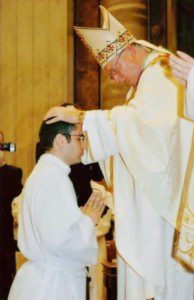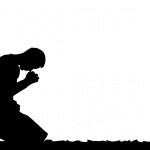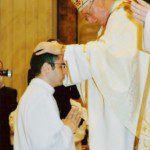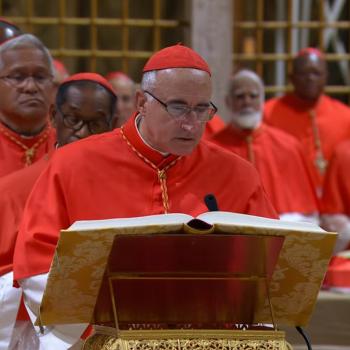On May 27th, 2017 at 10am at the Cathedral of Saint John the Baptist, seminarians Christopher Hassel and Patrick May will be ordained transitional deacons for the Diocese of Savannah. All are welcome to attend this momentous occasion. An ordination to the diaconate or priesthood is one of the most beautiful ceremonies of the Church.
From the early days into Medieval times, the diaconate was a distinct order within the Church. A deacon worked closely with his bishop, oftentimes receiving substantial responsibilities, including the financial and judicial administration of the local church. The authority enjoyed by deacons led Saint Jerome to say, “the archdeacon thinks himself injured if ordained a priest.” During the first millennium of Christianity, a number of deacons were elected Pope, needing to be ordained priests and bishops before taking the See of Peter. After the Council of Trent in the sixteenth century, the office of deacon declined, becoming a mere step to complete as a man moved towards priestly ordination. Today, the transitional diaconate is a time of apprenticeship and preparation before the ordination to the priesthood.
Distinct from transitional deacons are permanent deacons. During the Second Vatican Council, Pope Paul VI asked the Council to restore the Order of Deacon as a permanent order where deacons assisted priests rather than bishops. Rather than an assistant to the bishop as in the past, when the Order was restored in 1967, a permanent deacon became an assistant to the local priest. Beside being an assistant to the parish priest in whatever needs are present in the local community, the permanent deacon has certain liturgical roles: he may baptize, witness marriages, administer sacramentals, conduct funerals, read sacred scripture, preach and instruct the faithful. He has a role to play during the celebration of the Eucharist and in the conferring of other sacraments. Married men may be ordained permanent deacons, but once ordained, if the man is single or becomes a widower, he commits to living a celibate life.
The Second Vatican Council foresaw that permanent deacons would become numerous in countries were the need for priests is greatest, especially in Africa and South America. However, the majority of the 42,000 permanent deacons of the world are in the United States and Europe. One possible explanation for this reality is that men in the United States and Europe has more leisure time to dedicate to the studies necessary for diaconate ordination.
Last year at a gathering of deacons with Pope Francis, while reminding them of their primary call to service, the Pope stated, “one who serves is not a slave to his own agenda, but ever ready to deal with the unexpected, ever available to his brothers and sisters and ever open to God’s constant surprises… dear deacons, if you show that you are available to others, your ministry will not be self-serving, but evangelically fruitful.”
I conclude with beautiful and challenging words which are said to the newly ordained deacon by the bishop as he receives the Book of the Gospels, “Receive the Gospel of Christ, whose herald you now are. Believe what you read, teach what you believe, and practice what you teach.”
Picture from my diaconate ordination by Bishop Callahan, OFM Conv at Saint Peter Basilica, Vatican












